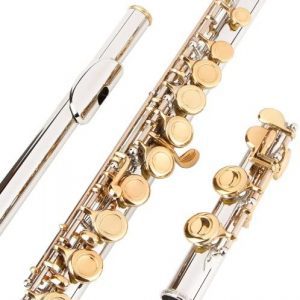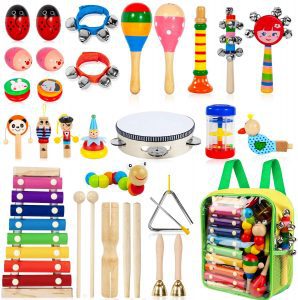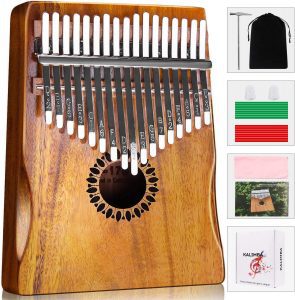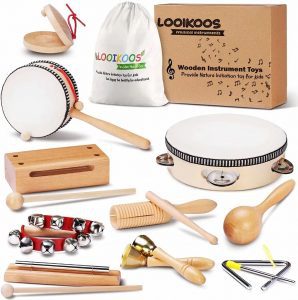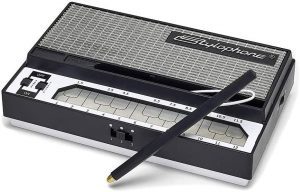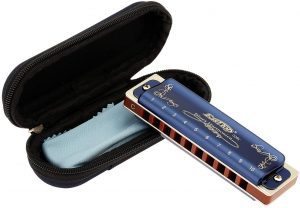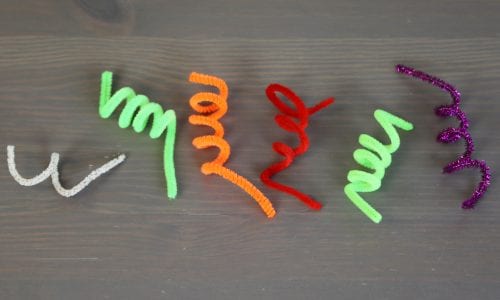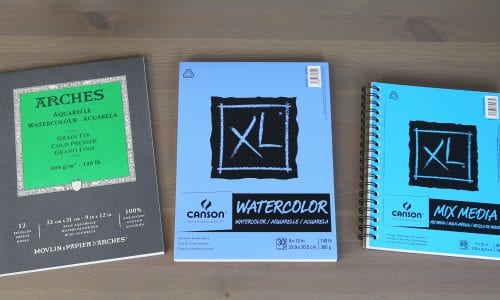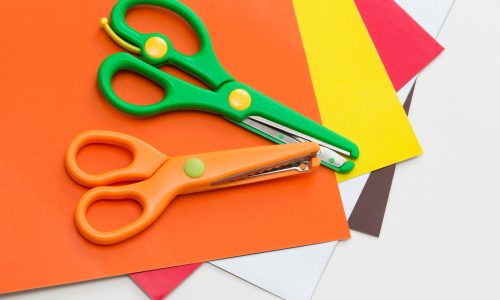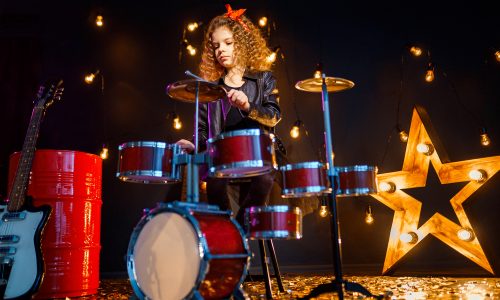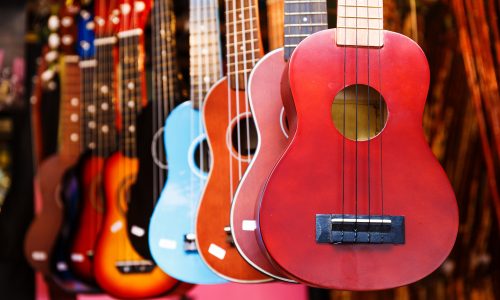The Best Musical Instruments
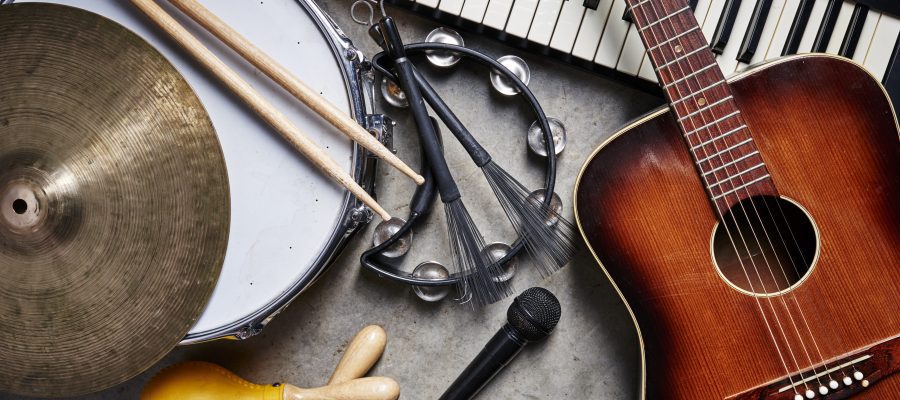
Our Review Process
Don't Waste Your Money is focused on helping you make the best purchasing decision. Our team of experts spends hundreds of hours analyzing, testing, and researching products so you don't have to. Learn more.
Our Picks For The Top Musical Instruments
- 1. Glory Cupronickel Closed Hole Flute Musical Instrument
- 2. Taimasi Assorted Kids Percussion Musical Instruments, 33-Piece
- 3. Newlam Wood & Steel Kalimba Thumb Piano Musical Instrument
- 4. LOOIKOOS Kids Wooden Percussion Musical Instruments, 16-Piece
- 5. Stylophone Miniature Stylus Synthesizer Musical Instrument
- 6. East top Pocket Size Diatonic Harmonica Musical Instrument
- 7. Yamaha YRS-23 ABS Plastic Soprano Recorder Musical Instrument
Made from copper-nickel, this flute has what it takes to last over the months and years you're playing. It comes with leather pads that provide water resistance while also keeping it airtight. The closed-hole 16-keys design and needle spring will give you the power you need to belt out notes.
Great for StudentsWhether you’re taking a class or learning on your own, this flute is a top-quality option.
You'll get 18 different types of musical instruments in this set, each designed to help preschoolers develop a love for music The toys are made from nontoxic material and lead-free paint to give parents peace of mind. When not in use, you can store the instruments in the included clear backpack.
Get A Head StartThis set lets preschoolers develop a love for making music from a young age.
The air-dried wood and ore steel bars make this a high-quality instrument. Each key is embossed with its corresponding letter and note to help you learn to play. The hand-rest curve design provides an ergonomic setup that will keep you comfortable while you play.
Great for NewcomersThis easy-to-learn thumb piano is a fun alternative to the traditional piano setup.
Engage your child with this fun percussion set that will instill a love for music from a young age. You'll get a wood sounder, hand drum, triangle, maracas, wooden block, tambourine, castanet, sleigh bells, hand bells and a chime bar. It also comes with a drawstring bag fit for holding it all.
For Multiple ChildrenChildren can join with siblings or friends to create their own band with this percussion set.
Buying Guide
A love for music isn’t the only reason to learn a new instrument. There are numerous benefits to picking up a flute or sitting down at a piano. First, there’s the fact that learning new skills helps keep your mind sharp. Then there’s the enjoyment you get out of the social interaction aspect of it, whether it’s playing in a band or orchestra or showing off your skills to others.
But there are also the cognitive benefits scientists have seen in children. Both behavioral and neural differences were observed in children who picked up a musical instrument. Parents who want their children to learn to play an instrument might feel challenged to engage them, but that engagement can start at a young age.
The right musical instrument can make a big difference. But figuring out which instrument can be tricky. Percussion and keyboard tend to be favorites of young children, and you can start with both of those from a fairly young age. You can find drum sets and toy pianos designed for children as young as the toddler years.
But as a child gets older, it’s important to revisit those early choices. A kid in middle school or high school might prefer to try out something from the woodwind or brass family of instruments. That toy piano could eventually need to be exchanged for a full-size version, or at least a smaller piano that’s a real instrument instead of a toy.
For adults, it’s never too late to learn to play an instrument. In fact, studies have shown that for adults ages 65 and up, learning a new instrument can boost mood, improve self-esteem and reduce feelings of isolation.
There are other considerations when choosing an instrument. The quality of materials and portability are both important, but you should also look at durability. This is especially important for a child’s instrument, which can easily become damaged if that instrument leaves home on a regular basis.
What to Look For
- If a student is serious about making music, it’s important to look at top-quality design. The materials used in certain instruments play a fundamental role in the sounds that come out of them.
- For brass and woodwind instruments, the seals on the keys need to be airtight to ensure you’re getting the best sound. Also, look at the point of contact between the mouth and the instrument itself. The embouchure hole should be the right size. If it’s too large or too small, you’ll find you’re not getting the sound quality you expect.
- Those looking for an instrument to introduce a young child to music can try a variety. Consider toys that offer percussion and keyboard experiences, for instance, to let children experiment. It doesn’t mean your child can’t switch later, but it does emphasize that there’s more than one instrument out there.
- Storage is an important consideration when you’re shopping for anything for your home. For children, instruments might be able to go into a bag or a closet for safekeeping between uses. If you’re purchasing an instrument for your child to use at school or take to individual instruction, make sure it comes with a case that makes it transportable.
- Some instruments are easier to learn than others. Recorders and bongos both can get you up to speed quickly, as can a tambourine. Keyboards and the piano can be slightly more complicated, but you can find instruments designed to make learning easy.
- If you have more than one child, consider equipping your kids with the tools they need to form an amateur band. You can do the same if you regularly have friends or neighbors over who are around your child’s age.
More to Explore
Determining the very first musical instrument is impossible since man has been making music using inanimate objects for as long as they’ve been on Earth. The first known musical instrument was a simple flute, which dates back 67,000 years.
Musical instruments continued to appear throughout history, with Egyptians playing castanets and drums and Greeks preferring stringed instruments like harps. The Romans also enjoyed harps, but they added trumpets and flutes to their repertoire.
The biggest boost in musical instruments began in the mid-1700s. Throughout the 1800s, numerous musical instruments were invented. However, the 1900s brought electricity, which also popularized electric guitars and synthesizers.

